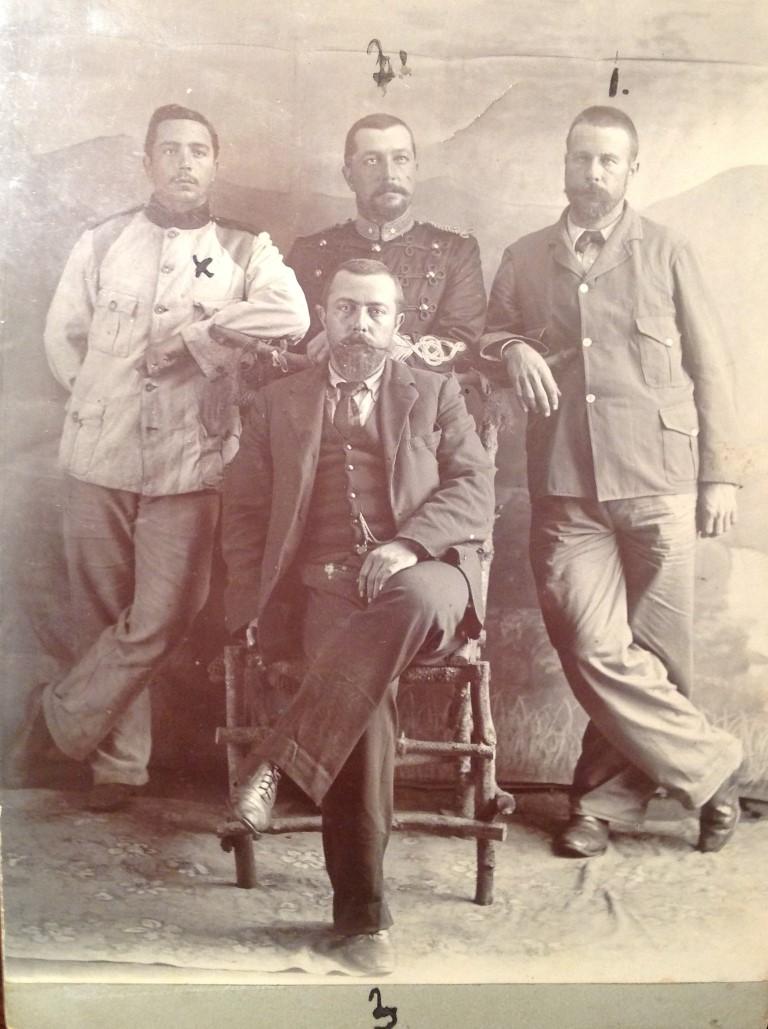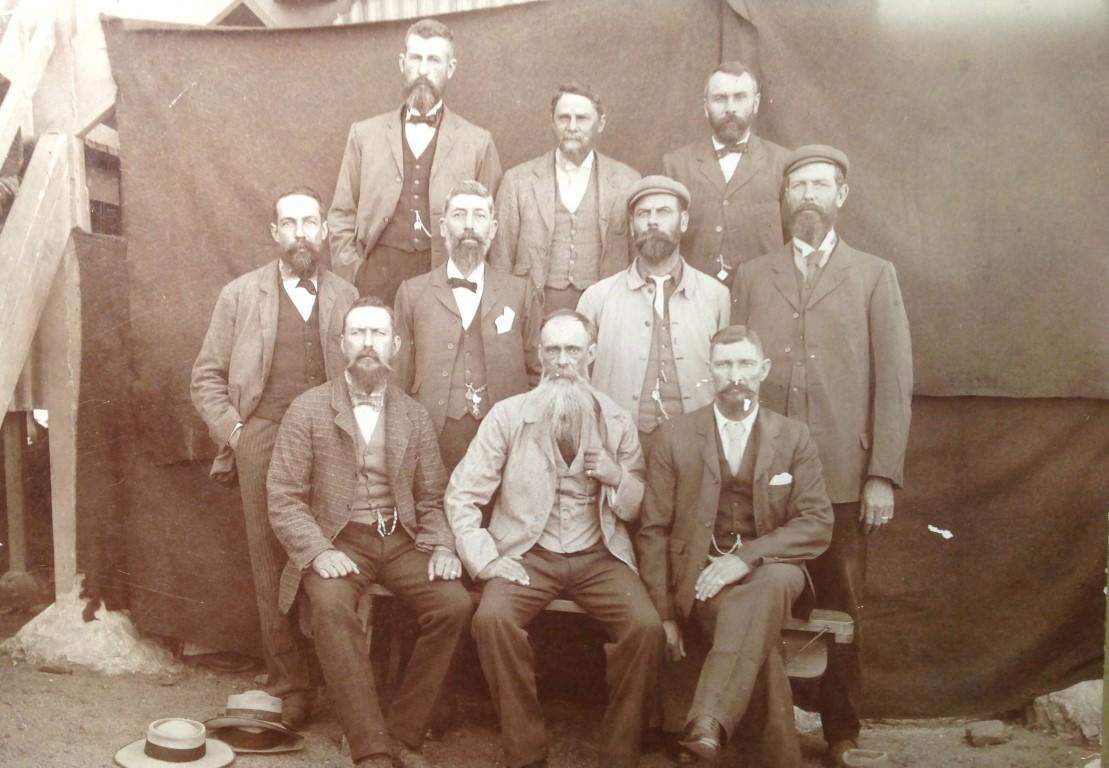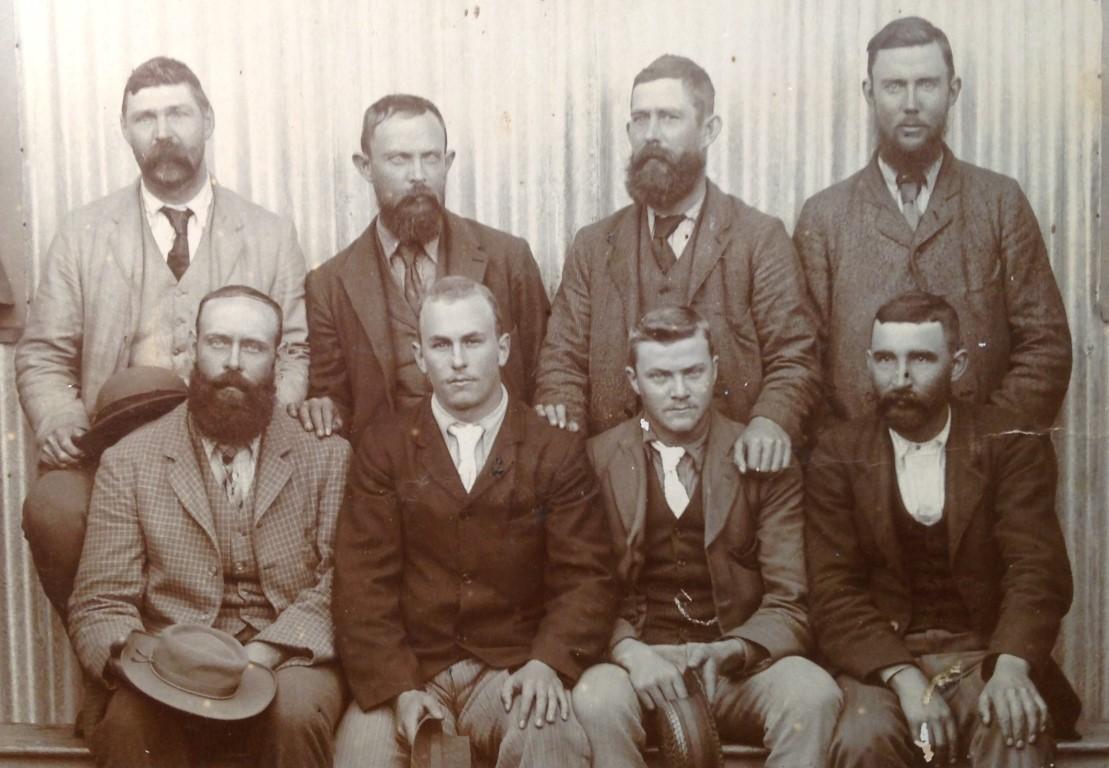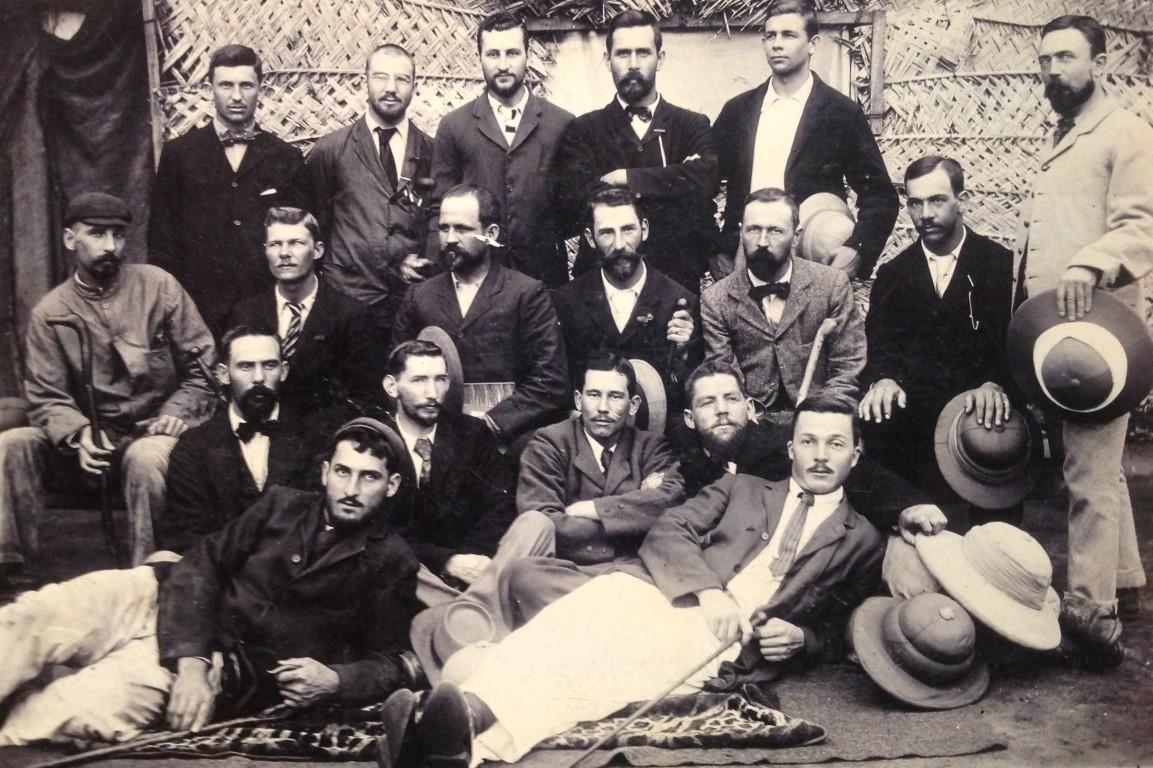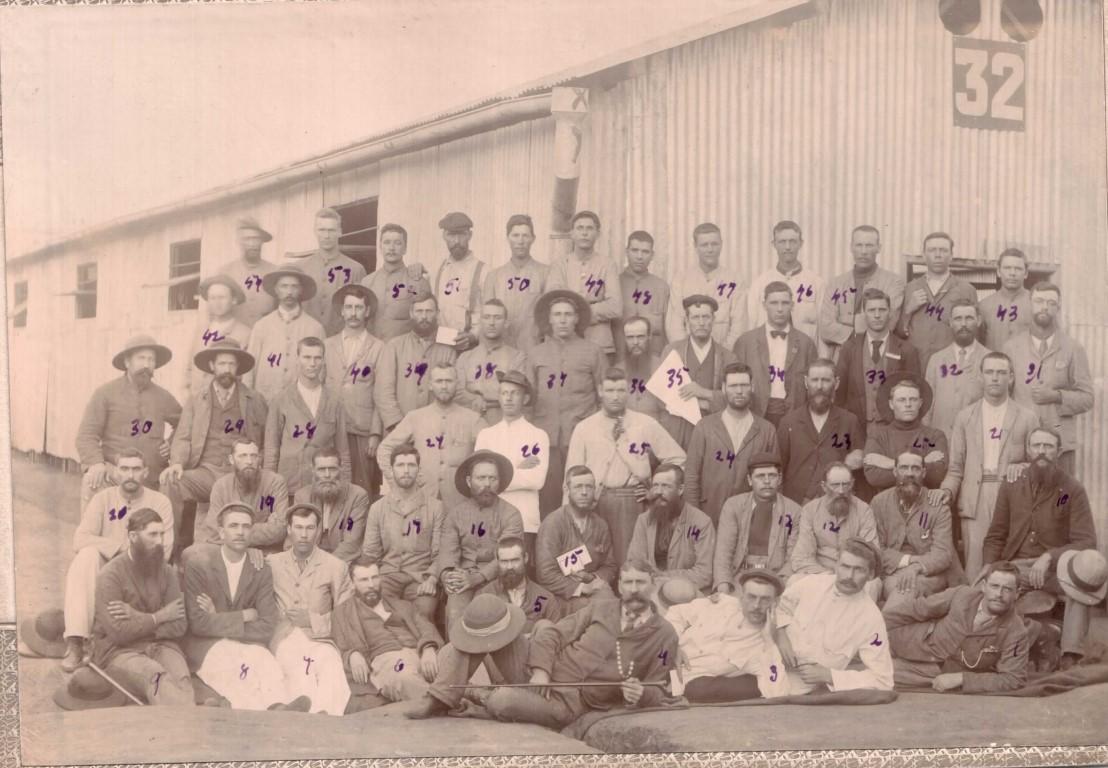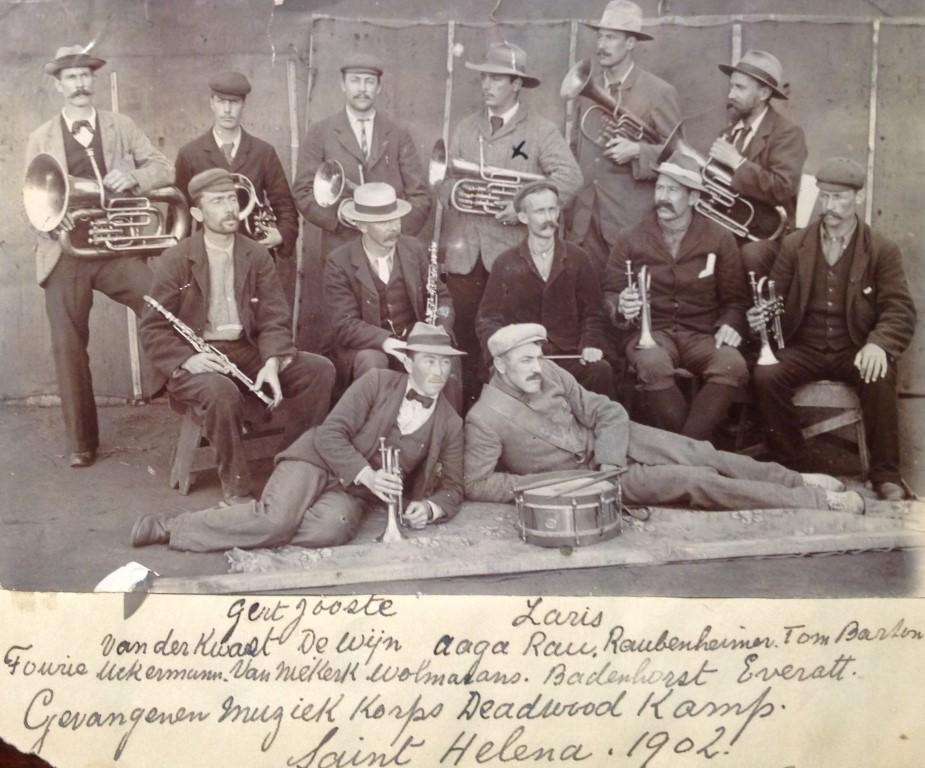Disclaimer: Any views expressed by individuals and organisations are their own and do not in any way represent the views of The Heritage Portal. If you find any mistakes or historical inaccuracies, please contact the editor.
Huge was the surprise when the author received multiple enquiries on a Prisoner of War (PoW) camp photograph that was included in a recent article on photography during the Anglo-Boer war (click here to view).
This Diyatalawa PoW camp photograph has the names of all 54 men captured on the back thereof (See Photo 5 below).
This unexpected interest confirms that genealogical research and natural curiosity around family links and history, even some 120 years after the event, are alive and well.
The intention of this article is therefore twofold, namely to list the names of the sitters identified in these 6 group photographs in order to assist current and future researchers and also to briefly reflect on the photographic activity at these PoW camps.
Prisoner of war camps
Around 24 000 boer prisoners were transported to various overseas camps. During this period some 577 men perished either at sea or in the camps – mainly due to natural causes. It has been recorded that the eldest prisoner was 78 at the time whilst the youngest was 7 years old. Camps existed in South Africa, Bermuda, St. Helena, Ceylon, India and Portugal.
Camp photographers
Although much has been published by historians about life and activities in these various PoW camps, little is known about professional photographers active in these camps. It is thought that the majority of these would have had no direct link to South Africa and that they were based in the countries or on the islands where these camps existed, or that they travelled there with the specific intention of photographing the captured men.
We have just come to accept the existence of PoW photographs, in the majority of instances taken many 1000 kilometres away from home. The social value of these images is clear – then and today. Men needed to communicate to their loved ones left behind – many of them in concentration camps themselves.
Many questions arise around photographic activity in these camps, such as: How did the photographs come about? Who were the photographers? What did they observe or experience whilst capturing the images? How many PoWs would have had cameras themselves? Much research is still required to answer these plus multiple other questions.
The following two photographers active in two South African PoW camps have been recorded to date, namely: John J Kruger (Bellevue camp) and Ambrose Jarman (Green point). Other South African based photographers would more than likely also have negotiated access to these local camps in order to practise their trade.
The two photographers active at one overseas camp identified to date are: B. Grant who took various photographs of Cronje (with his men and his wife) and A.L. Innes (both based at St. Helena). These two individuals more than likely were already based on the island as photographers in that they have not been recorded in the British register of Victorian photographers.
Access to PoW camps was more than likely not freely available to the entrepreneurial photographers of those years. Such access would more than likely have required special permits and sign-off from higher authorities.
It is not known whether any professional South African based photographer became a PoW, yet it has been recorded that F.J. Fick, Pieter Pijl (member of Dutch corps), W.J Graaf and one Prak set up a photographic business in the Broadbottom camp (Schoeman, 2011). It is assumed that they would then have taken photographs as well. This raises another question – where did they source all their equipment/material from? None of the parties have been identified as active South African based photographers prior to their transfer to the island or on their return from the island. This potentially suggests that they were amateur photographers who saw an opportunity to provide a service to their fellow countrymen.
Six Photographs – One Hundred and Three Prisoners of War
Sadly, none of the photographers in the six photographs below have been identified.
Photograph 1: Deadwood camp (St. Helena) – 4 Wolmarans men
Photograph taken on 30 March 1902. Of interest is the jackets worn by the two men at the back. Could the jacket of the man in the middle back be that of the presidential guard?
Names on back are (it is possible that some initials may be incorrectly captured by the author): J.B. Wolmarans; J.F. Wolmarans; J.M.A. Wolmarans (Jacobus Marthinus Andreas) & M.J. Wolmarans (Marthinus Johannes)
Although some numbering appears on the image itself, no numbering appears on the back of the image specifying which Wolmarans is which.
Marthinus Johannes Wolmarans was the commandant of the Potchefstroom commando and was part of the siege of Mafeking where he was wounded. He and his burgers also formed part of General P.A. Cronje’s commando’s that were captured as prisoners at Paardenberg and sent to St. Helena. The eight sons of Commandant Wolmarans all took part in the war and one was later a commandant under General Liebenberg.
Photograph 2: Bellevue camp (South Africa) – 10 Men
Photograph taken 21 March 1902. The back of the photograph has each man’s town of origin recorded as well as location where they were captured by the British troops. Note - at least 5 of the men have bow ties.
Names on back (from top left to right)
- General J Crowther from Ladybrand (captured at Slaapkrans on 29.7.1900)
- P.G. van Wijk from Smithfield (captured at Slaapkrans on 29.7.1900)
- J.M. Martins from Koeksoord (captured Paardeberg 27.2.1900)
- P.J.H.S. Terblanche from Potchefstroom (captured 21.2.1900)
- Commandant F. Pieterse from Hoopstad (captured Belmont 23 November 1899)
- M.E. Combrinck from Phillippolis (captured Rietkuil 13 April 1900)
- P.S. van der Merwe from Smithfield (captured Klerksvlei 30.8.1900)
- H. van der Merwe from Potchefstroom (captured Paardeberg 27.2.1900)
- L.T.F. de Jager from Ladybrand (captured Slaapkrans 29.7.1900)
- J.P. du Plessis from Bloemhof (captured Paardeberg 23.2.1900)
Photograph 3: Broadbottom camp (St Helena) – 8 men
Standing from left to right followed by those sitting from left to right: Harry Swan; John Bell; Roelof Schutte; Gideon Kok; Jacobus Meintjies; George Stegmann; Thomas Kok; Johs Maree
Photograph 4: Diyatalawa Camp (Ceylon) – 14 of 18 men identified
Photograph taken during 1901.
Standing: (6 men – from right to left): Oosthuizen (teacher); Unknown; Gielie Theron; Gielie Odendaal; Cornelis Ferreira; Unknown
Seated – 2nd row: (6 men – from right to left): Unknown; Wilcox; J.S. Kruger (from Ladybrand); Schalk (?); Brits; Wessels
Seated in front: (6 men from right to left – starting with man in white pants on right): De Wet (from Wepener); Stefanus Ferreira (from Clocolan); Unknown; Le Roux; Malan; Van der Watt (from Marquard)
Photograph 5: Diyatalawa Camp (Ceylon) – 54 men
- J.C. Henning
- A.W. Linde
- J.F. Vivier
- H.C. Human
- E. Krulkase (?)
- J.G. Gouws
- J. Kachelopper (Could be Kachelhoffer)
- F. Pretorius
- B. de Klerk
- P. Erasmes (could be Erasmus)
- F. Klaase
- G. Wepner
- F. Pretorius
- N. Fourie
- H. Fourie
- P. Groenwald
- P. Bezuidenhoud (could be Bezuidenhoudt)
- J. Barnard
- G. Wepner
- J.B. Linde
- P. Coetzee
- E. van der Walt
- W. Kruger
- P. Koetzee
- L. Koetzee
- W. van Eden (could be van Eeden)
- C. Bauwer (Could be Bouwer)
- A. du Plooy
- J. Klaase
- M. van Graan
- J. Coetzee
- H. Beukes
- A. Beukes
- M. Beukes
- G. Slabbert
- A. van Vuren
- S. Terblansch (Could be Terblanche)
- J. Potgieter
- N. Coetzee
- S. Boetha (could be Botha)
- H. Strydom
- G. van Meulen
- W. Smith
- J. Nel
- J. Swanepoel
- W. Kruger
- J. Kruger
- J. Swanepoel
- C. Swanepoel
- B. de Klerk
- G. Nel
- S. Botha
- P. du Plessis (spelled du Plesies)
- P. Barnard
Photograph 6: Deadwood camp (St Helena) – 13 men
Music group photograph taken during 1902.
Front left: Gert Jooste; Laris (?)
Middle row from left: Van der Kwast; De Wijn; Aaga Rau; Raubenheimer; Tom Barton (?)
Back row from left: Fourie; Ueckermann; Van Niekerk (first name probably Hugo); Wolmarans (This seems to be the same person as in Photo 1 above – on left); Badenhorst; Everatt (Everitt?)
Schoeman (2011) makes reference to van der Kwast, Aaga Rau & Everatt.
All names with a question mark next to them (?) indicate that that the author was not sure of the hand writing – surnames may therefore have been incorrectly captured.
Readers who have any additional information on photographers who were active in the PoW camps from 1900 onwards are invited to inform the author accordingly as this is clearly a field that requires further research.
About the author: Carol is passionate about South African Photographica – anything and everything to do with the history of photography. He not only collects anything relating to photography, but also extensively conducts research in this field. He has published a variety of articles on this topic and assisted a publisher and fellow researchers in the field. Of particular interest to Carol are historical South African photographs. He is conducting research on South African based photographers from before 1910. He is also in the process of cataloguing Boer War stereo images produced by a variety of publishers. Carol has one of the largest private photographic collections in South Africa.
References.
- De Beer, M. (1992). A vision of the past – South African photographs 1843 – 1910. Struik publishers. Cape Town.
- Schoeman, C. (2011). Broers in die stryd. Hollanders in die Anglo-Boereoorlog. Zebra Press. Kaapstad.
- Van Schoor, M.C.E. (1983). Die Bannelinge – A.B.O. Boerekrygsgevangenes (1899-1902). Dreyer drukkers. Bloemfontein.
- www.angloboerwar.com
- www.boerenbrit.com/archives
- www.cartedevisite.co.uk/photographers
- www.wmbr.org.za
Comments will load below. If for any reason none appear click here for some troubleshooting tips. If you would like to post a comment and need instructions click here.

